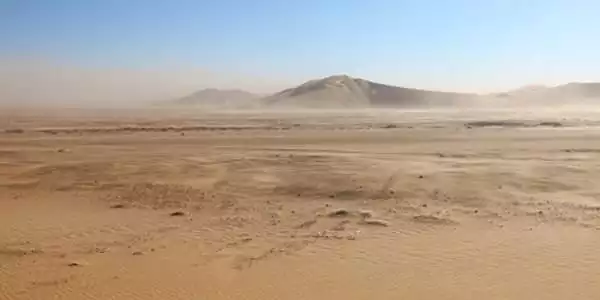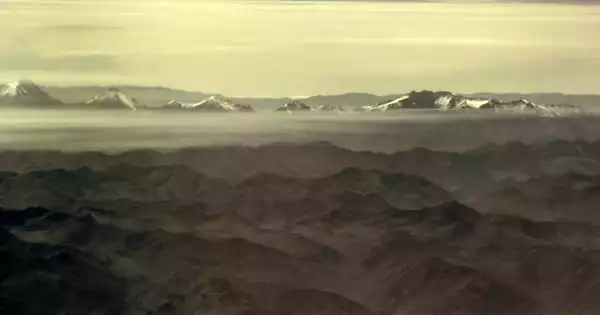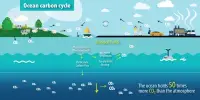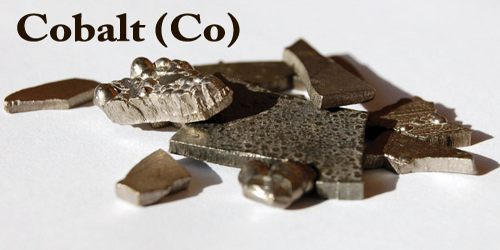Iodine is a crucial micronutrient for human health that is transported through the atmosphere and probably absorbed in part from it. Atmospheric iodine is abundant in the marine boundary layer (MBL), lower free troposphere, higher free troposphere, and stratosphere, where it participates in rapid photochemical cycles that deplete ozone (O3) and alter the atmospheric oxidative capacity.
When winds carry fine desert dust high into the atmosphere, the iodine in the dust can cause chemical reactions that remove some air pollution while simultaneously allowing greenhouse gases to linger longer. The discovery, which was published today in the journal Science Advances, may compel scientists to reconsider how particles from land might affect the chemistry of the atmosphere.
“Iodine, the same chemical added to table salt, is eating away ozone in dusty air high in the atmosphere,” said Rainer Volkamer, a CIRES Fellow and chemistry professor at CU Boulder. Volkamer was part of the crew that took precision atmospheric measurements by plane over the eastern Pacific Ocean several years ago. The new discovery, he claims, has ramifications not only for air quality but also for climate, because iodine chemistry can cause greenhouse gases to linger longer, prompting us to reconsider dust-based geoengineering strategies.
Our comprehension of the iodine cycle is insufficient. There are land-based sources and chemistries that we were unaware of that we must now consider.
Rainer Volkamer
Volkamer stated, “Our comprehension of the iodine cycle is insufficient. There are land-based sources and chemistries that we were unaware of that we must now consider.”
Dusty layers of air are often very low in the air pollutant ozone, which, when concentrated, can damage people’s lungs and even crops, according to atmospheric specialists. It appeared that some sort of dust-surface chemistry was consuming ozone, but no one had been able to demonstrate this in laboratory studies. Others have theorized on this, but there is a lot of skepticism, according to Volkamer. In contrast, laboratory research have long demonstrated that a gaseous version of iodine can consume ozone – but there were only clues of a link between dust and iodine.
Other enticing signals about the process were found in a dataset from 2012, derived from a series of aircraft flights off the coasts of Chile and Costa Rica. The gaseous iodine levels in dust found blowing offshore from South America were alarming. Volkamer handed over the data to Theodore Koenig, the study’s lead author, who was a Ph.D. student at the time. Koenig described the data as part of a collection of hazy pictures provided by atmospheric chemists all over the world. “Iodine seems to connect with dust… but not totally obviously” in one photograph, he said. Dust appeared to be destroying the ozone layer everywhere, but why? “Iodine and ozone certainly relate, but there were no ‘photos’ of both with dust,” said Koenig, who is now an air pollution researcher at China’s Peking University.

TORERO (the “Tropical Ocean Troposphere Exchange of Reactive Halogens and Oxygenated Hydrocarbons,” a field campaign funded by the National Science Foundation) data captured those three characters together, finally, in one image, he said, and it was clear that where desert dust contained significant levels of iodine – like dust from Chile’s Atacama and Peru’s Sechura deserts – the iodine was quickly transformed into a gaseous form But what happened to the dust-based iodine? “The mechanism continues to elude us,” Volkamer added. “That is work for the future.”
So the visual is hazy again, but the science is clearer than it was before, according to Koenig. “At the end of the endeavor, I have more questions than at the beginning,” he remarked. “However, they’re more precise queries.”
They’re also crucial for anyone concerned about the future of the atmosphere, according to Volkamer. The reactions of iodine in the atmosphere are known to play a role in lowering levels of OH, which can increase the lifetime of methane and other greenhouse gases. Perhaps more importantly, several geoengineering concepts include introducing dust particles into the Earth’s atmosphere in order to reflect incoming solar radiation. In the stratosphere, ozone is not a pollutant; rather, it forms an important “ozone layer” that protects the globe from incoming radiation.
Volkamer stated that if iodine from dust was chemically converted into an ozone-depleting form in the stratosphere, “That would be bad because it would postpone the recovery of the ozone layer. Let us not introduce anthropogenic iodine into the stratosphere!”
















